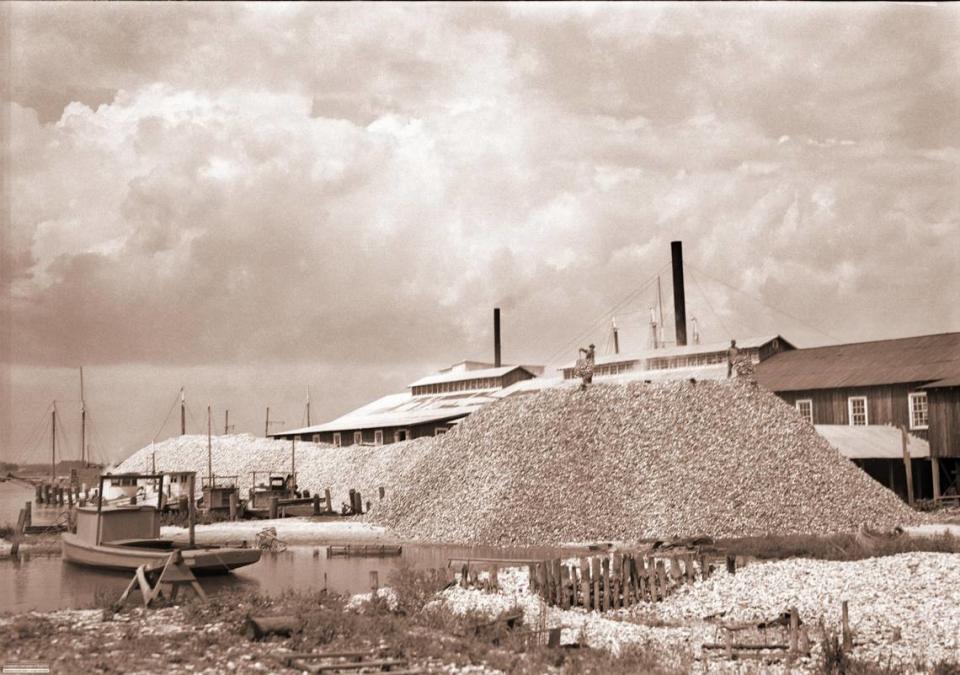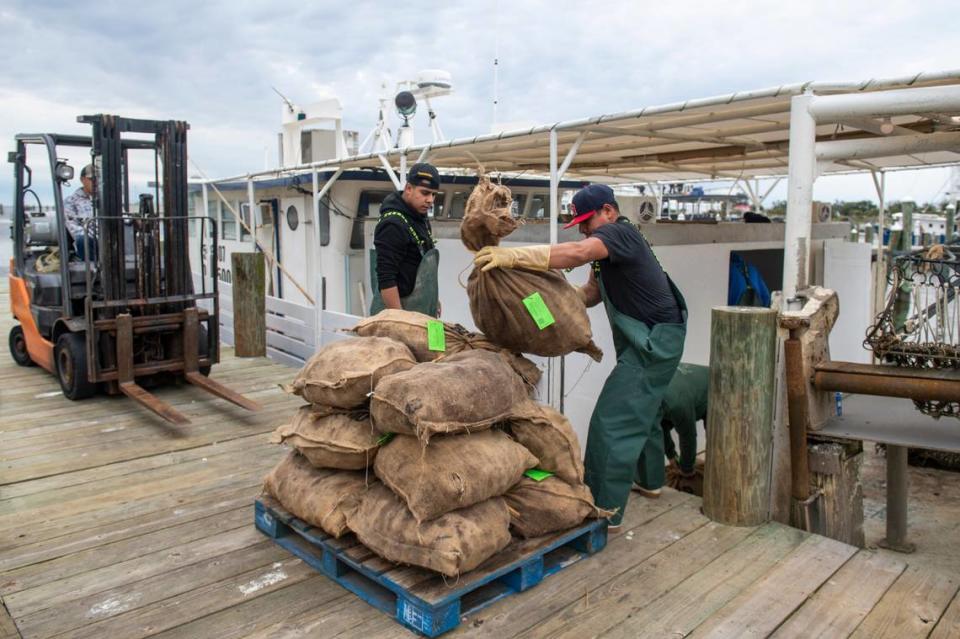MS is granting private oyster leases to 15 businesses. Could it save the Coast industry?
As the Mississippi Coast endures its fifth year without an oyster season, the state is finally expanding a private lease program aimed at reviving the industry.
The Mississippi Department of Marine Resources, which overseas Coast fisheries, has approved 15 out of 25 applicants for oyster leases, some with multiple leased areas, said Rick Burris, the DMR’s chief scientific officer. The DMR posted a map Dec. 1 showing the leased areas in the Mississippi Sound but not the companies that are leasing them.
Burris said the names of those companies will be released only when leases are finalized The map of leased areas must be displayed for 30 days to give anyone with a claim or claims to the water bottoms a chance to object. Once the comment period ends, the agency can sign leases with the approved applicants, who will then be free to get to work raising oysters.
Applicants were graded based on their stated financial stability, equipment available, time frame for planting, percentage of leased area to be planted and other factors. The DMR has published online a map that shows about 5,900 acres in the Mississippi Sound approved for leases.
“In theory, when these leaseholders start planting their leases and putting more cultch on the bottom, you should increase the population of oysters in those areas,” said Rick Burris, chief scientific officer at the Mississippi Department of Marine Resources, which manages the state’s seafood industry.
Biloxi once ‘Seafood Capital of World’
At the turn of the 20th Century, Biloxi was nicknamed the Seafood Capital of the World and its streets were paved with oyster shells. But a string of natural disasters, coupled with the 2010 BP oil spill, have decimated Coast oyster reefs that once flourished naturally on the water bottoms of the Mississippi Sound. Flooding disturbed the balance of fresh and salt water that helped build extensive reef systems off the shores of Pass Christian, Biloxi, Gautier and Pascagoula.
Millions of dollars the state collected and spent from BP fines and penalties failed to repopulate the reefs, where oysters plant as larvae on hard surfaces and remain for life, growing to adult size in two to three years.
State leaders hope private industry can restore the reefs, reasoning that substantial leaseholder investments in oyster beds will give growers incentive to succeed. People who have spent generations in the industry also believe they can succeed by placing larvae at the right time of year on water bottoms where they have spread shell, limestone or other material, called cultch, suitable for oyster growth
They say the state hasn’t always planted at the right times or on solid bottoms. The DMR’s executive director, Joe Spraggins, has said the agency doesn’t have the manpower or money to maintain oyster beds in today’s climate.
The survival of oyster reefs is crucial to the Coast’s ecology. Reefs provide habitat for other species and protect the shoreline from storm surge. Oysters also filter pollutants from the water, with one oyster capable of filtering up to 50 gallons of water a day.
“This program could benefit the whole Mississippi Sound, not just leaseholders,” said Erik Broussard, the DMR’s deputy director.

MS law should increase oyster production
Leases run for 15 years, at $3 an acre on up to 2,500 acres. Leaseholders have the right to renew those leases. DMR plans to document that leases are being worked. If not, a leaseholder could be forced to forfeit his or her lease.
The state will determine what to do with an additional 6,000 acres potentially available for lease once the first round of leases is completed, DMR said.
The state is retaining 4,000 acres of reef south of Pass Christian, Biloxi, Gautier and Pascagoula. Some of those public areas would be available for public harvest if they produce enough market-size oysters. DMR surveys indicate sub-adult populations are growing in some areas, but there are not enough adult oysters for harvest this season.
Meanwhile, oyster houses are offering wares from other states. Jennifer Jenkins, manager of Crystal Seas Oysters in Pass Christian, said her company is receiving steady supplies of wild-caught oysters from Louisiana, Texas, Virginia and Maryland. Crystal Seas also has leased water bottoms in Louisiana, where oyster grounds have been leased to individuals and businesses since the 1800s.
Private leasing has proven effective in Louisiana, with Crystal Seas and other companies catching oysters on leases affected by the same disasters the Mississippi Sound has suffered.
Mississippi previously had a smaller lease program, but most leases were inactive. The new law require that leases be worked or lost is designed to ensure that leased oyster grounds are productive.



